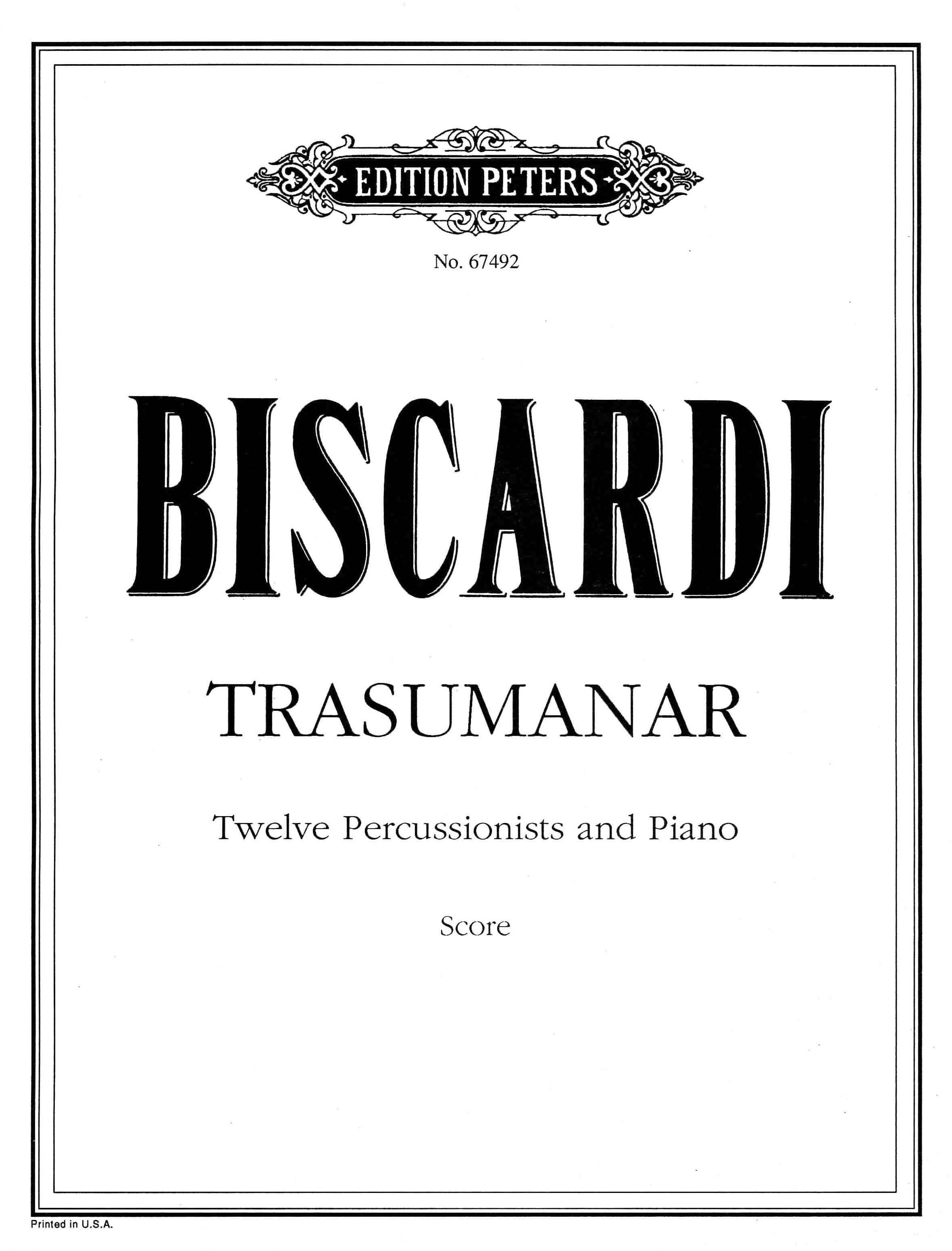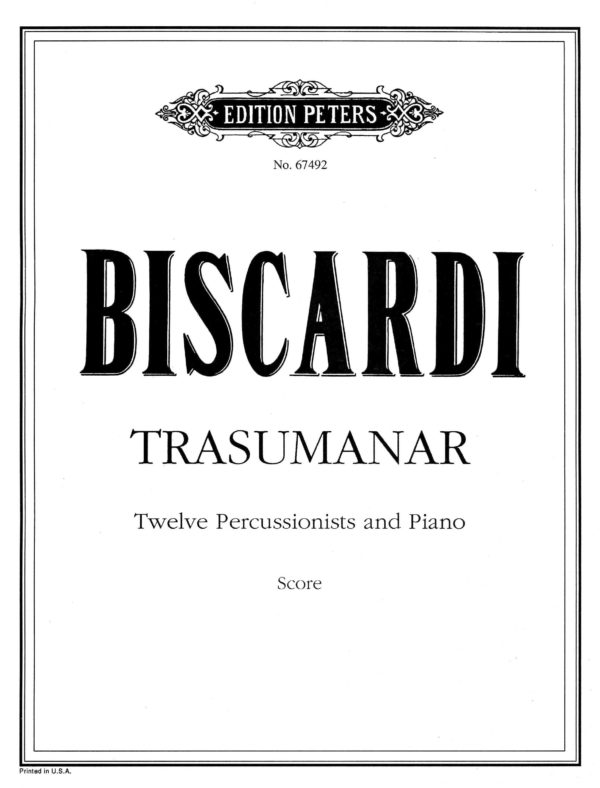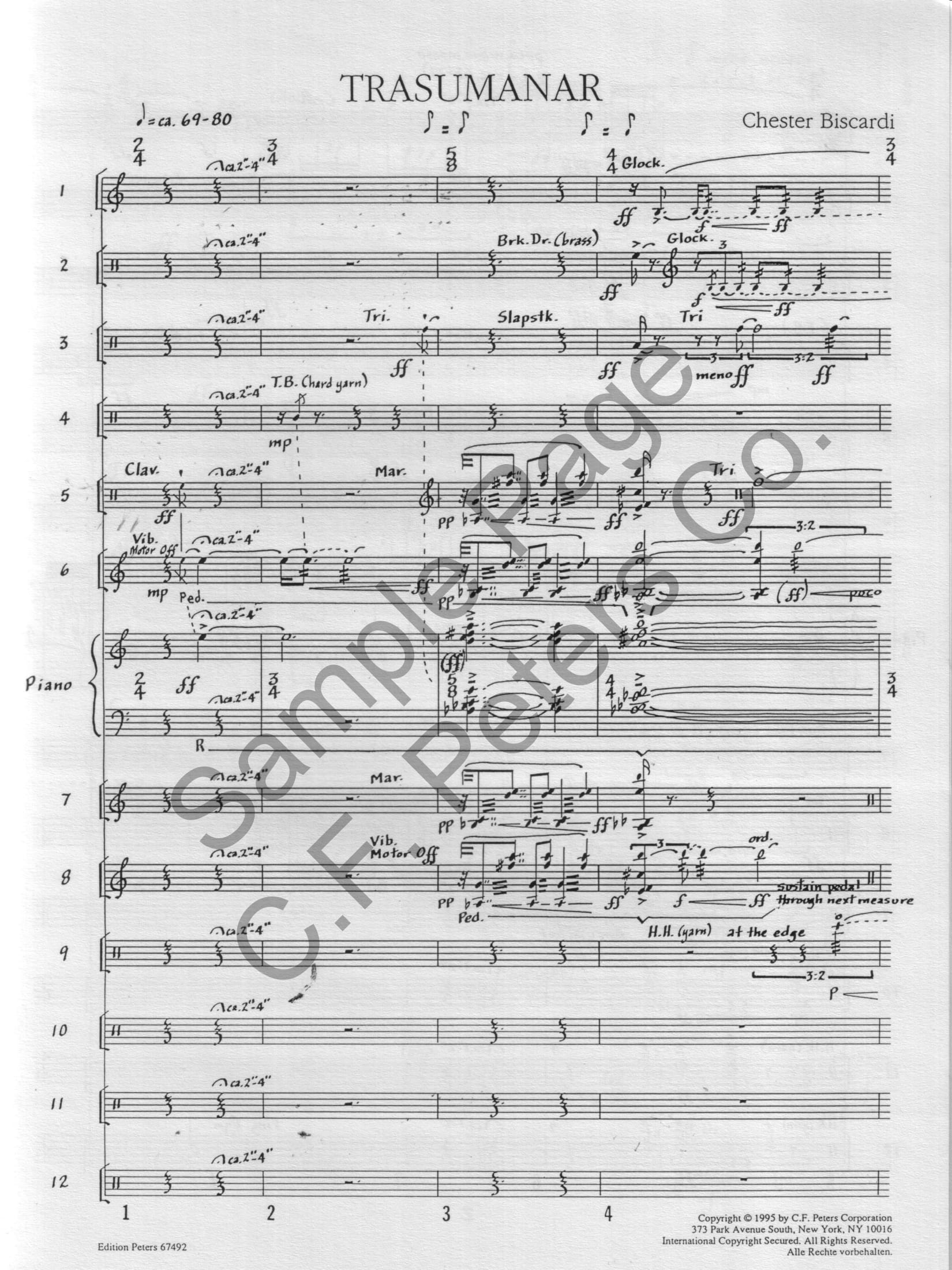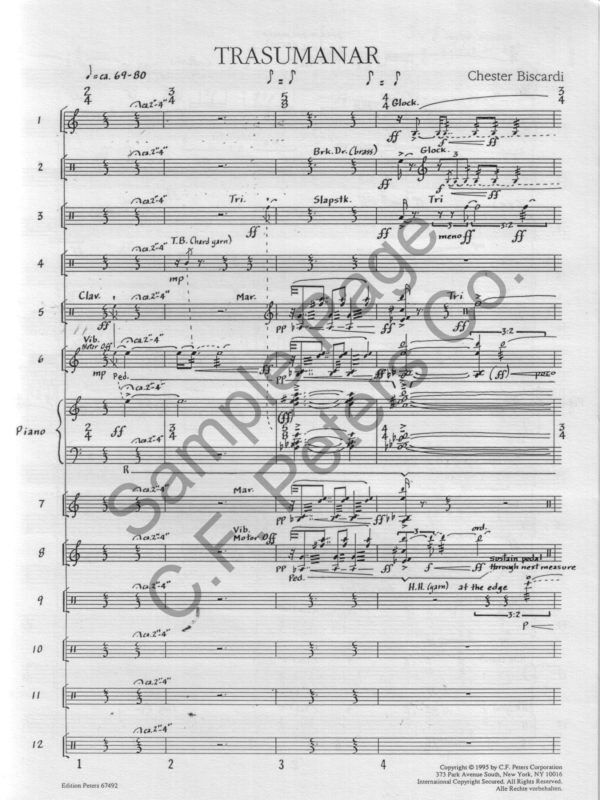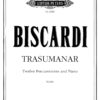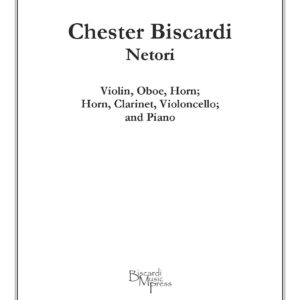Description
Audio
The New Jersey Percussion Ensemble; Gary Van Dyke, conductor
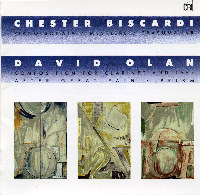
This recording appears on Chester Biscardi & David Olan, CRI CD 565 (New York, 1988) along with Piano Sonata (1986; rev. 1987), and Mestiere (1979), Anthony de Mare, piano, as well as three works by David Olan: Composition for Clarinet and Tape (1976), Laura Flax, clarinet; After Great Pain, for soprano and electronic sounds (1982), Judith Bettina, soprano; Prism, for six percussionists and tape (1978), The New Jersey Percussion Ensemble, Peter Jarvis, conductor.
Premiere
First Performance: 6 May 1982
Buffalo Percussion Ensemble / Anthony de Mare, piano / Bruce Penner, conductor
State University of New York - Buffalo
Buffalo, NY
First Midwest Performance: 15 May 1983
Northwestern Percussion Ensemble / Robert Weinrich, piano / Terry L Applebaum, conductor
Northwestern University
Evanston, IL
First New York Performance: 15 March 1983
The New Jersey Percussion Ensemble / Raymond DesRoches, conductor
Symphony Space
New York, NY
Instrumentation
1 set of 6 graduated cowbells; 1 set of 6 graduated almglocken; 1 set of 6 graduated break drums; 2 sets of 5 graduated temple blocks; 2 sets of 4 graduated wood blocks; 4 sets of maracas (high and low); 4 sets of claves; 4 sets of castanets; 1 chinese cymbal; 4 sets of finger cymbals; 6 graduated suspended cymbals; 2 sizzle cymbals; 3 graduated triangles; 7 tam-tams (2 large, 3 medium, 2 small; 2 bass bows); 1 set of crotales (one octave - c4-c5) 2 glockenspiels; 10 hi-hats; 1 bell tree; 2 marimbas; 2 vibraphones (1 bass bow); 1 set of chimes; 2 sets of 4 graduated timpani; 1 set of 4 graduated bongs; 2 sets of 2 graduated timbales; 1 set of 6 graduated tom-toms; 1 military drum; 1 piccolo snare drum; 1 string drum; 4 tambourines; 2 graduated bass drums; 1 slapstick; 1 piano
The 1 set of 6 almglocken and the 1 set of 6 breakdrums make up one complete set as equally graduated as possible.
The 1 set of timables and the 1 set of bongs make up one complete set as equally graduated as possible.
The lowest 2 tom-toms, the military drum, 1 set of timbales and the piccolo snare drum make up one complete set as equally graduated as possible.
The 2 bass drums and the upper 4 tom-toms make up one complete set as equally graduated as possible.
Commissioner
Written for The New Jersey Percussion Ensemble, Raymond DesRoches, director, under a Fellowship Grant (1979-1980) from the John Simon Guggenheim Memorial Foundation
Publisher
C. F. Peters No. P67492
Score & Parts Rental
Steve Weiss Music
Program Notes
Trasumanar, for twelve percussionists and piano (1980), is scored for 32 different instruments and specifies a spatial arrangement which creates a sense of acoustic motion among the diverse instrumental groups: drums dominate the back of the stage, woods – stage right, metals – stage left, and the pitched instruments – in front.
The piano, which introduces the basic motivic, harmonic, and rhythmic ideas, functions less as a solo instrument than as a means to unify and give motion to a music which varies between being static and highly dynamic. The relationship of the piano to the percussion ensemble was suggested by works for piano and electronic sounds: the percussion functions as an electronic tape – extending, amplifying, and interacting with the sounds of the piano.
“Trasumanar” is a word coined by Dante to describe the experience of rising above the human state. At the beginning of the Paradiso, Dante’s human nature is transmuted to a higher level. He is left bewildered by the sensual pull of being human and the spiritual aspiration to transcend human experience. The dramatic tension created by this struggle provides the structural framework of Trasumanar.
Trasumanar was written for The New Jersey Percussion Ensemble and its director, Raymond DesRoches, with invaluable assistance from percussionist Joseph Passaro.
Press
Composer Chester Biscardi (born 1948 in Kenosha, WI) is an often-honored composer who has received the Prix de Rome, an Ives Fellowship, and a Guggenheim Fellowship, and became chairman of the music department of Sarah Lawrence College. His doctorate of musical arts degree is from Yale and his master's in musical composition and his master of arts in Italian literature are from the University of Wisconsin.
It is not unexpected that several of his compositions have a connection with Italian literature, and this one is inspired by the greatest work of that literature, Dante's Divine Comedy. The poet coined the word trasumanar to describe the process or experience of being taken from the human state and rising to a state above it. Dante's narration describes the sensation of that transmutation, feeling the pull of the senses of his human nature against the spiritual yearning to transcend it.
Biscardi often finds in literary works and paintings a key not just to the descriptive content of his musical composition, but its structural or formal framework. He says this 13-minute work for 12 percussionists and piano derives its form from the opposing elements of this trasumanar process. Thus, there are elements in the music that are static, as the perceived timeless qualities of Paradise might be. These oppose dynamic, rapidly changing elements. Most of both textures appear in the percussion parts; the piano links them and gives them motion. Biscardi likens the percussion writing to the effect of the taped part of a tape-and-live-soloist work; the percussion here extends and interacts with the piano part.
Dante's progress might be suggested by the stage layout of instruments. Drums are at the rear, wooden percussion instruments are in the middle areas on the right, metal percussion instruments are in the middle left, and pitched instruments are in front. This creates a sense of movement from one state to the other, a quality that is hard to capture in just two channels.
Biscardi wrote the work for the New Jersey Percussion Ensemble, one of America's leading permanent percussion groups, and received important technical advice and assistance in scoring the work from professional percussionist Joseph Passaro.
The work is full of energy, rolling whirlpools of sound and a few violent tonal geysers, based on certain thematic and harmonic ideas at the piano."
The listener will be treated to a visceral experience that moves from moments of relative stasis to powerful climaxes characterized by dense polyphonic stratification. It will be a heady experience for players and audience alike, and will test the mettle of a mature collegiate ensemble."

